
Discover how to make the most of 3 days in La Digue with this detailed itinerary, from stunning beaches to local food. Whether you’re seeking adventure or pure relaxation, this guide has everything you need to explore the very best of the island.
Disclosure: This post may contain affiliate links, which means we’ll receive a commission if you purchase through our links, at no extra cost to you. Please read full disclosure for more information.
La Digue is the perfect place to slow it down and embrace the laid-back island life.
With a population of fewer than 5,000 locals, this tiny island in Seychelles, off the east coast of Africa offers breathtaking beaches, crystal-clear waters, and a peaceful atmosphere.
The best way to explore is on a bike or on foot, taking in the surreal landscapes and natural beauty at every turn.
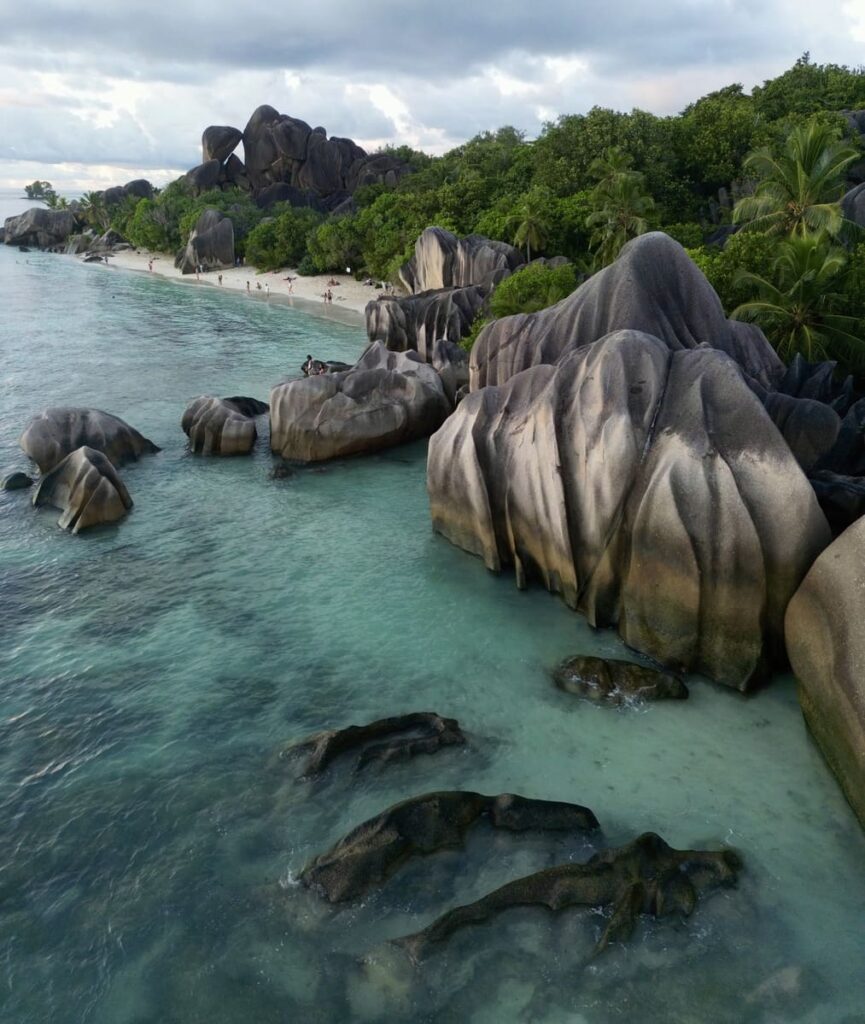
In this 3-day itinerary, we’ll show you exactly how to make the most of your time on La Digue—from soaking up the sun on world-famous beaches to uncovering lesser-known destinations that most visitors overlook.
Get ready to explore this island at your own pace, with real, practical tips from our personal experience that will help you plan your perfect trip.
We’ve got you covered with everything you need to know to make it happen.
Need help planning your entire Seychelles trip? >> Download the Explore Seychelles Travel Guide
Day 1
First, you’ll land in Mahé, home to the only international airport in Seychelles.
We flew with Qatar Airways using JetBlue points (since they’re part of the same alliance), spending just 38k JetBlue points plus $7 USD per person for our flight from JFK to Mahé, including a layover in Doha, Qatar.
Once you arrive, you’ll go through customs. Be sure to fill out your immigration form in advance—it only costs ~$10 USD per person.
If you wait until you land in Mahé, you’ll be charged around $75 USD per person for the immigration form, so it’s a big difference!
How to Get to La Digue
After clearing customs, it’s time to make your way to La Digue!
There are two main options: the ferry or a short flight. The ferry is the more budget-friendly choice, and while it’s slower than flying (which takes about 20 minutes), the ferry ride lasts around 1.5 hours and offers beautiful views.
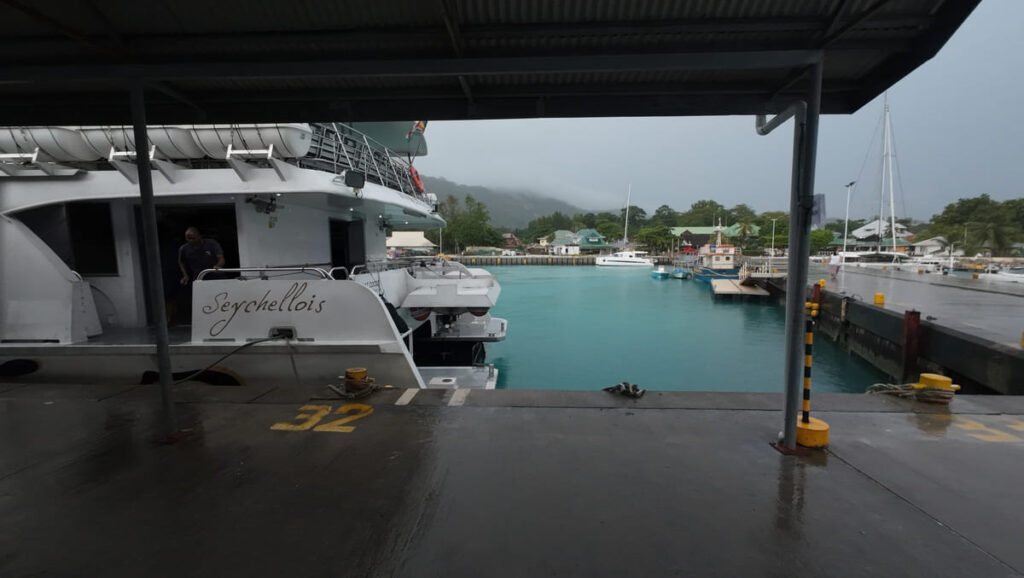
If you’re taking the ferry, make sure to plan ahead, as it’s located away from the Mahe airport.
You can either take a taxi for around $50 USD (about a 15-minute drive) or opt for the public bus, which is what we did.
Before you leave the airport, stop at the ATM to withdraw some Seychellois rupees and head to the information desk to buy a bus pass.
The bus only accepts this pass—no cash or credit cards. The bus stop is conveniently located right across the street from the airport.
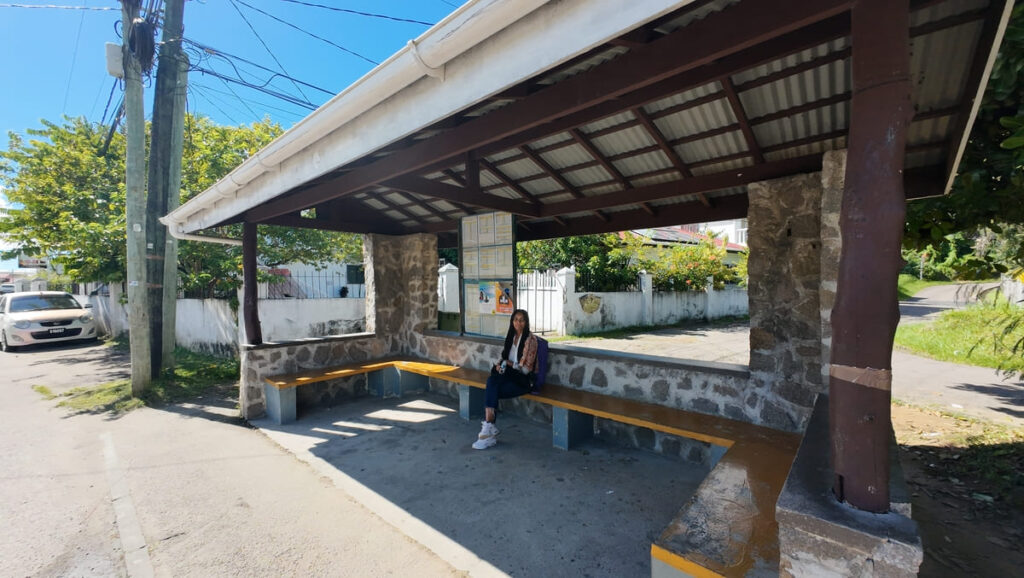
Remember to look both ways before you cross the street, and keep in mind that they drive on the left side of the road in Seychelles!
The bus ride to the ferry terminal cost us less than $1 USD per person and took about 20 minutes.
From the drop-off point, it’s roughly a 10-minute walk to the Cat Cocos ferry.
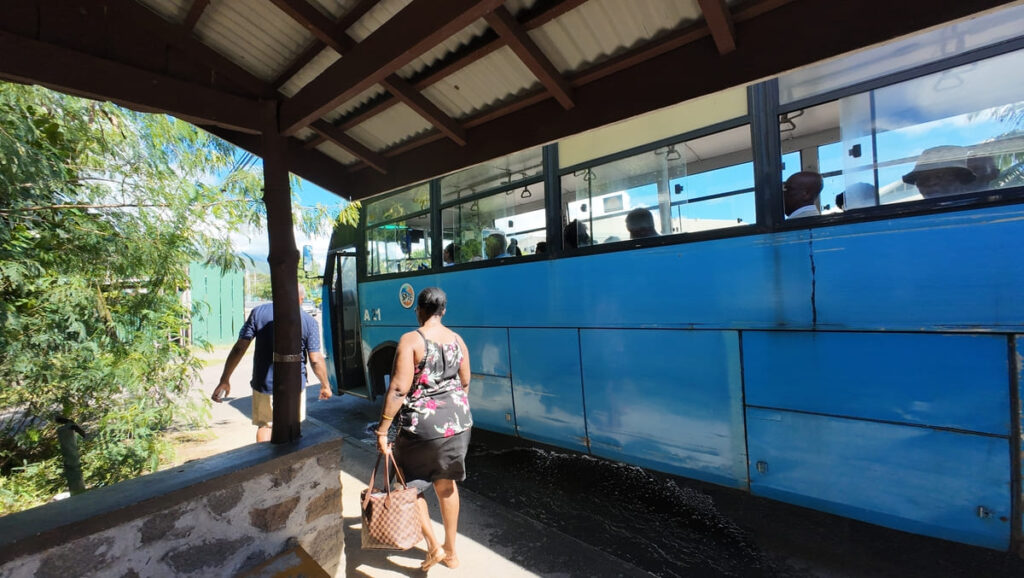
If you’re packing light, this walk is manageable, but if you have a lot of luggage, you may prefer a taxi instead.
Some ferries go directly from Mahé to La Digue, while others stop briefly at Praslin. Make sure to double-check the schedule so you know when to hop off.
The ferry ride from Mahe to La Digue cost us ~$70 USD per person.
Welcome to La Digue
Once you step off the ferry, you’ll immediately notice the slower pace and relaxed atmosphere of La Digue.
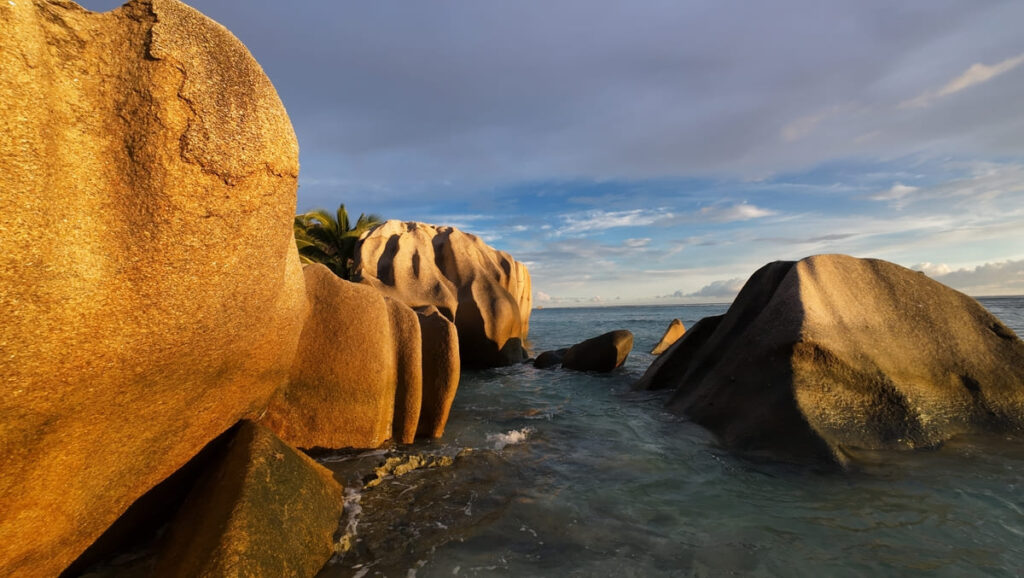
The island is known for its stunning beaches and laid-back vibes. As soon as you exit the ferry terminal, you’ll find plenty of bike rentals available, or you can walk to your accommodation if it’s close by.
Keep in mind that it’s quite hot in La Digue, so choose whatever’s most comfortable for you.
We walked about 25 minutes to our accommodation, but if you’re carrying heavy luggage, renting a bike or taking a taxi may be a better option.
Our host provided bikes at a cheaper rate than the rentals by the ferry. We paid 100 rupees (~$7 USD) per person per day for our bikes, which was a great deal compared to the ferry terminal rentals.
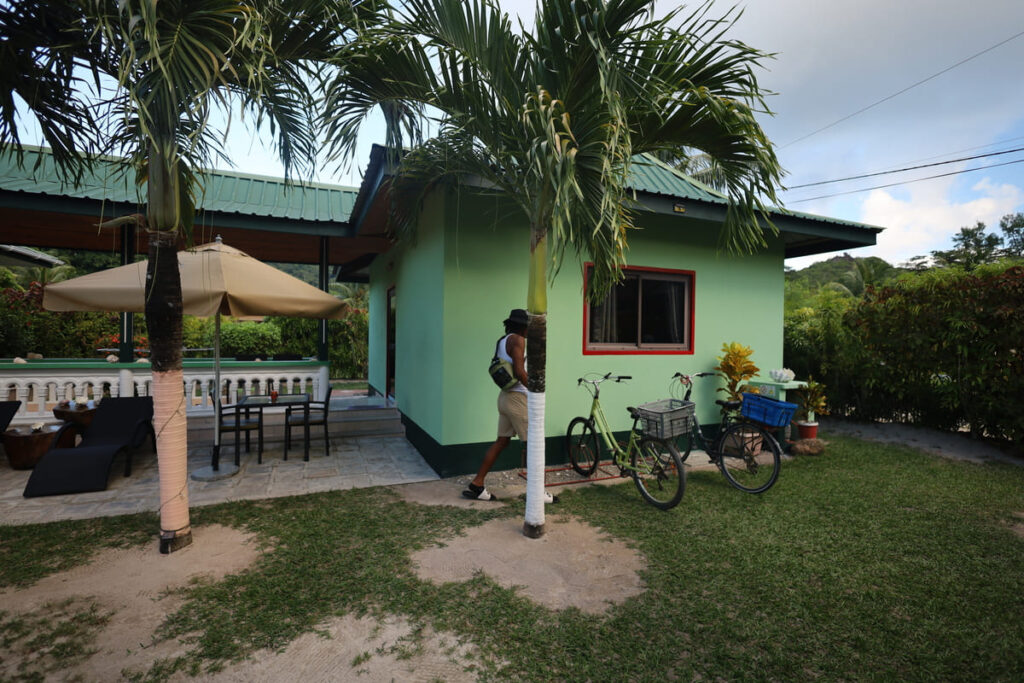
Where to Stay in La Digue
We stayed at My Angel for $76 USD per night. It’s a cozy studio with a kitchen, fridge, oven, private bathroom, and an outdoor shower—perfect for rinsing off after the beach without tracking sand inside.
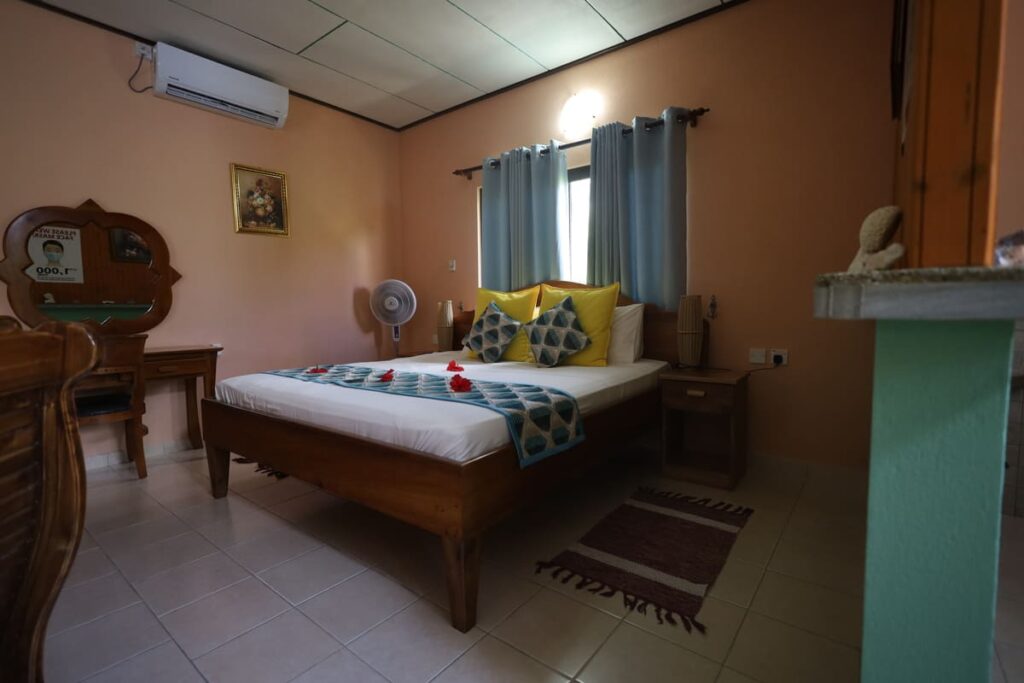
The outdoor patio is a peaceful spot to relax, and the area itself is quiet, offering a nice local living experience.
After a long journey, take some time to unpack, freshen up, and relax. Let yourself adjust to the time difference and soak in the island vibes!
For more top recommendations on where to stay in La Digue, check out our Explore Seychelles Travel Guide.
RELATED ARTICLE: Is the Waldorf Astoria Seychelles Worth It?
Anse Source D’Argent
This afternoon, make your way to L’Union Estate to visit Anse Source D’Argent, one of La Digue’s most famous beaches.
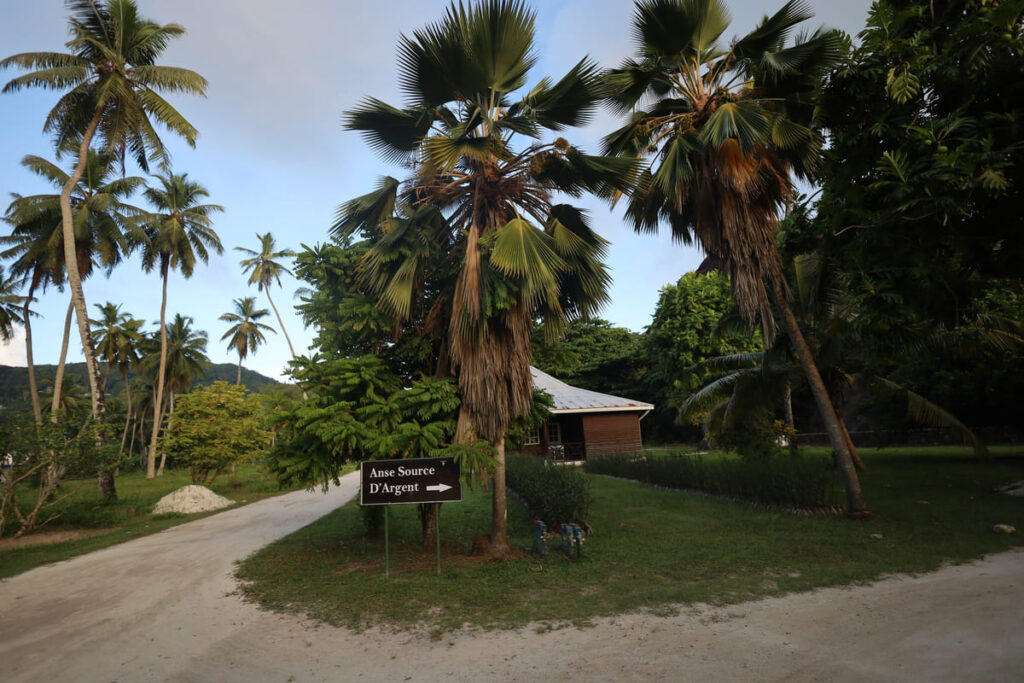
Unlike many of the island’s other beaches, this one isn’t free, but it’s absolutely worth the ~$10 USD per person.
Here’s a tip to get the most out of your visit: arrive around 4:30 pm.
When you buy your ticket at this time or later, it also includes entrance for the entire next day. This way, you can catch a stunning sunset today and return early tomorrow to explore without the crowds.

The estate is open from 7 am to 6 pm, and the best times to visit are before 10 am or after 5 pm when it’s less busy.
While exploring L’Union Estate, you’ll come across giant tortoises that are over 100 years old.
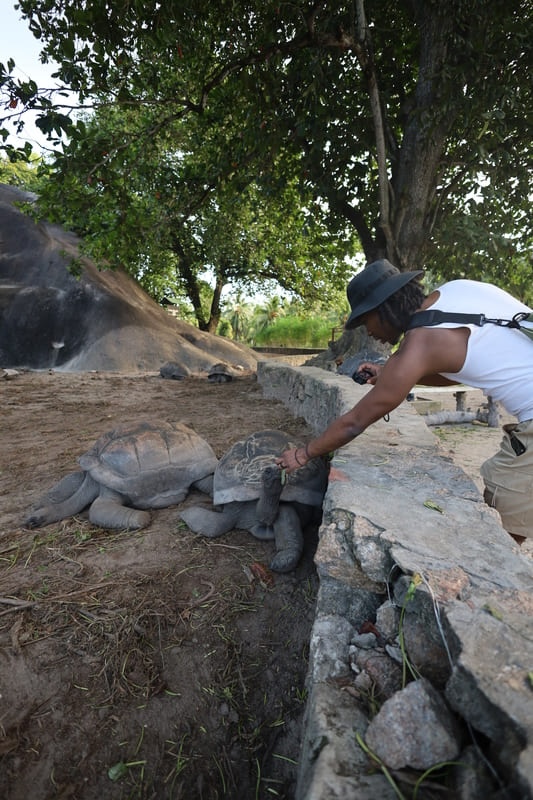
Keep walking and you’ll reach Anse Source D’Argent, where the breathtaking granite rock formations make it feel like you’ve stepped into a prehistoric paradise.
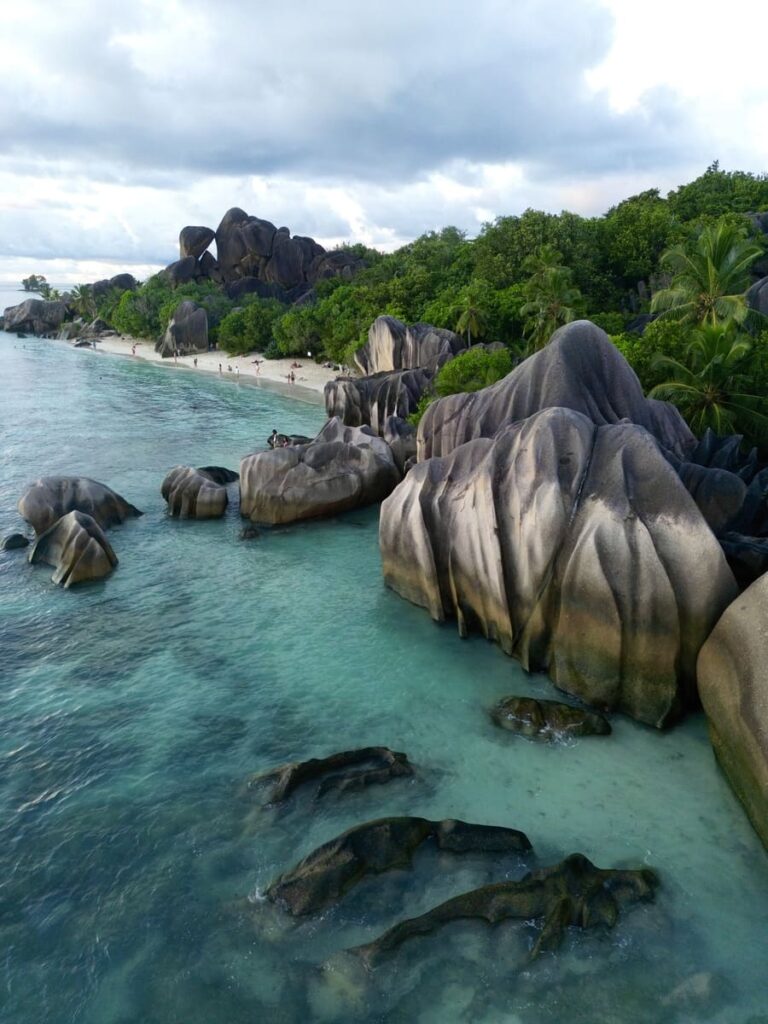
RELATED ARTICLE: Tips for Traveling in Egypt for First Time
Dinner
For dinner, head over to Chez Marston, a laid-back spot near the ferry port.
Their chicken and chips takeaway is a budget-friendly option at just 75 rupees (around $5 USD), making it a great way to wrap up your first day on La Digue.
RELATED ARTICLE: 3-Day Mahe Sightseeing Itinerary
RELATED ARTICLE: The Perfect 3-Day Cape Town Itinerary
Day 2
If you’re an early riser like my husband, La Digue’s sunrise will be the perfect way to start your day.
For an unforgettable experience, head to Anse Source D’Argent around 6 AM (double-check sunrise times when you visit).
You might decide to stay longer or explore more beaches before returning here like we did.
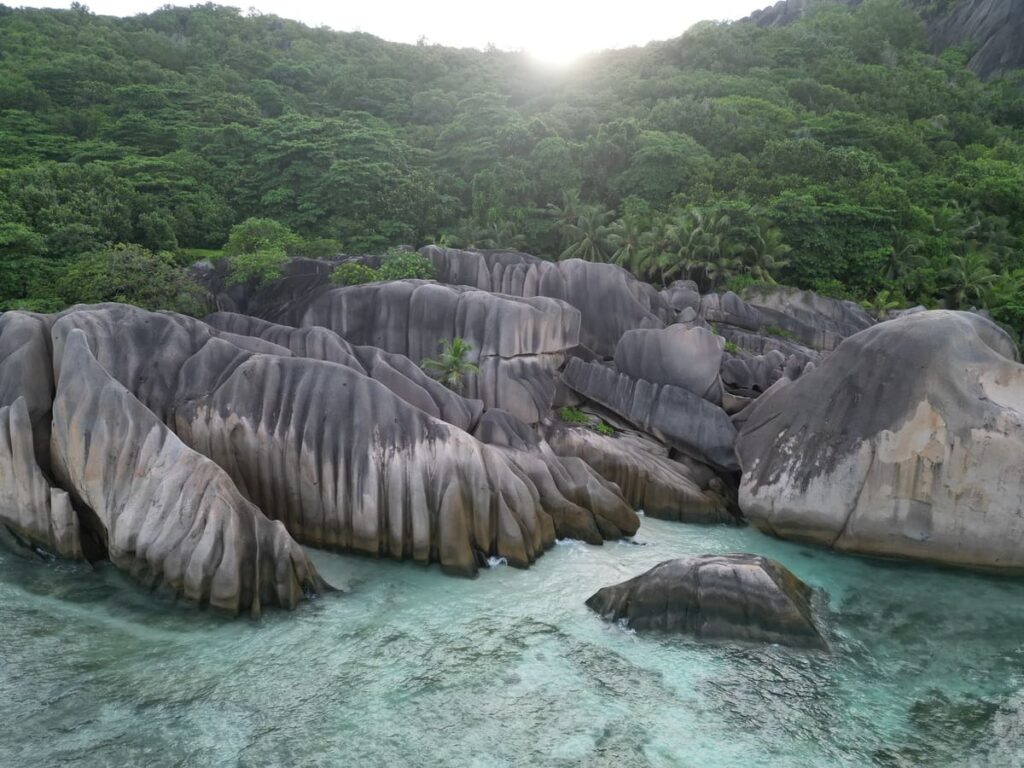
La Digue Fish Market
After soaking in the sunrise, stop by the La Digue Fruit and Fish Market, which opens around 8 AM on weekdays.
It’s a great place to grab fresh fruit—just 25 rupees (about $2 USD) for a bag.
Once you’ve got your snacks, bike over to the north side of the island to reach Anse Severe, the first stop on your beach-hopping adventure.
Anse Severe
Anse Severe is about 10 minutes from the fruit and fish market.
This beach is ideal for relaxing, with its soft white sand that feels like stepping on flour.
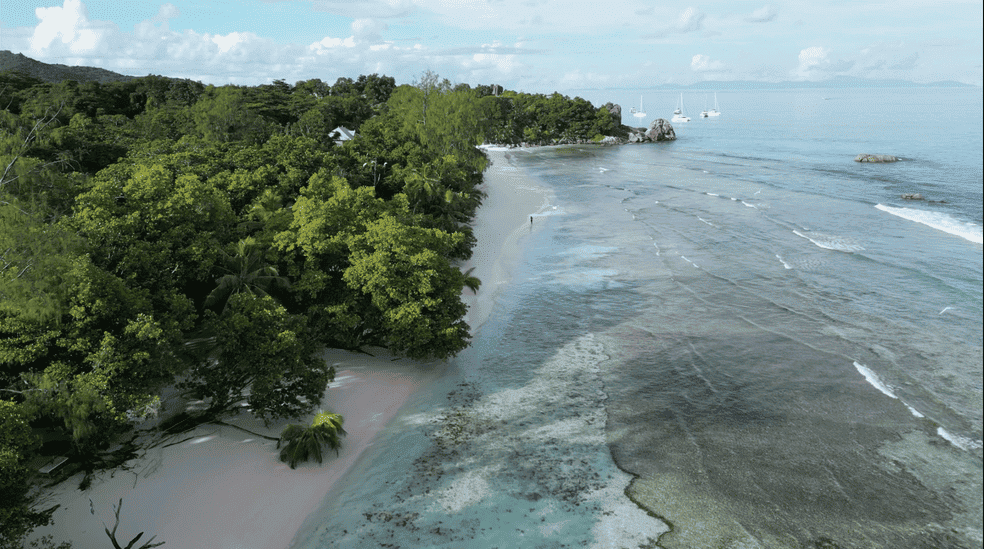
There’s even a small gym near the Bikini Bottom Beach bar on Anse Severe if you’re up for it.
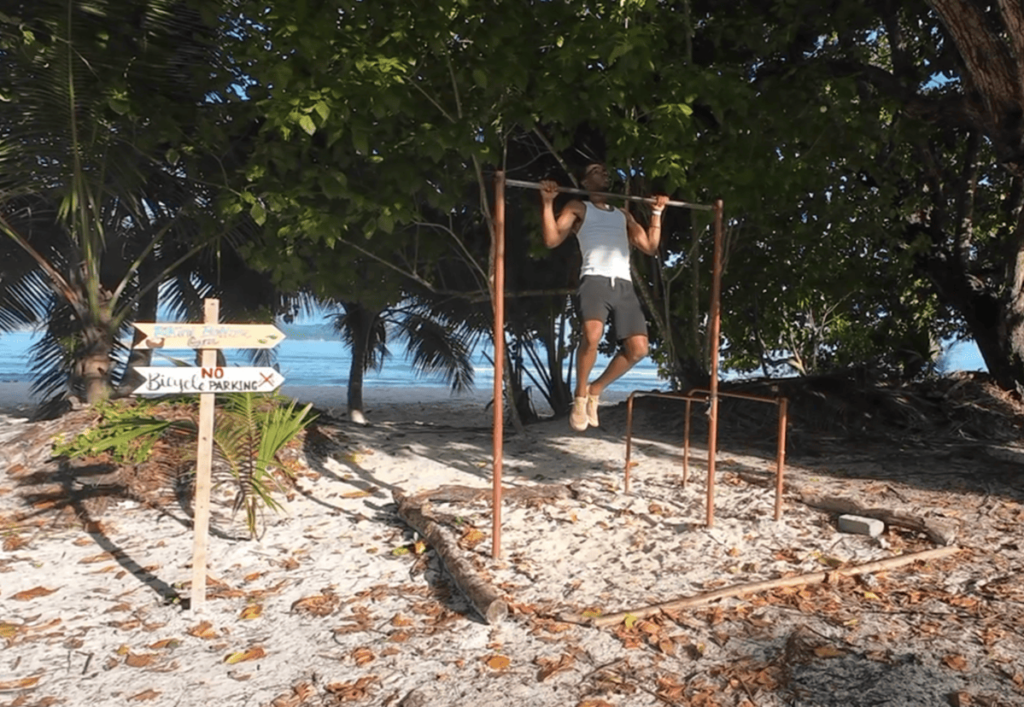
If lounging is more your style, you could easily spend the day here. But with so many stunning beaches in La Digue, it’d be a shame not to explore at least one more.
RELATED ARTICLE: See Table Mountain, Cape Town, South Africa
Anse Patates
Next up is Anse Patates on the northern coast, with its dramatic rock formations and deep blue water.
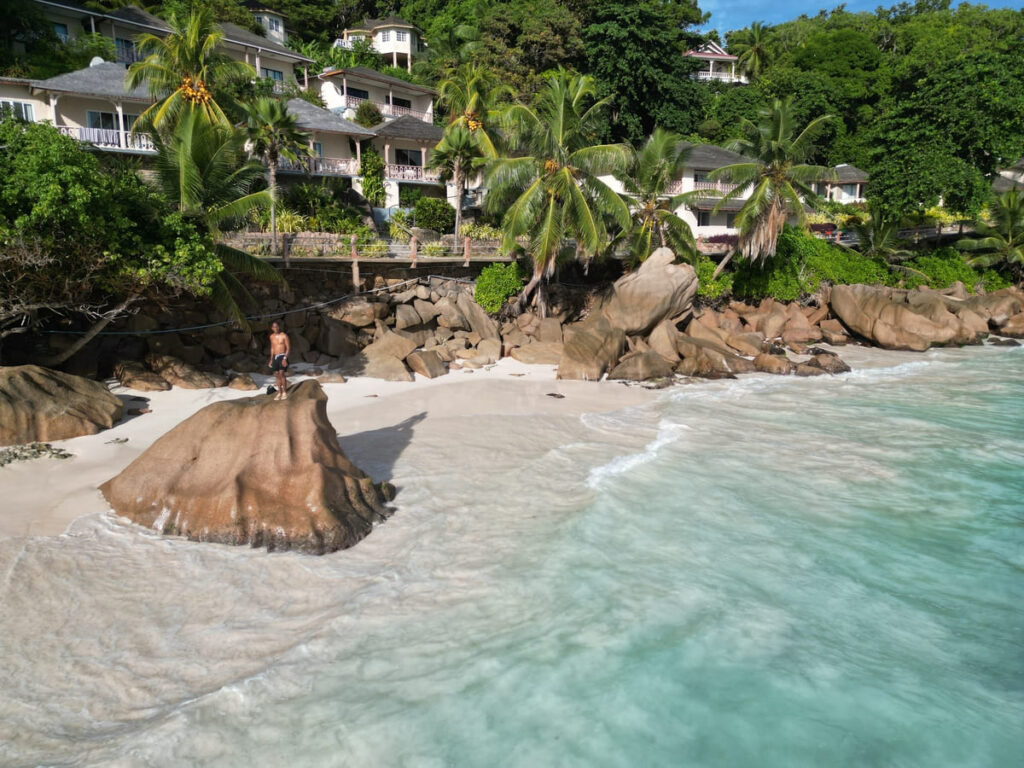
It’s the bluest water we saw on the island, so make sure to stop by for some photos or get in and snorkel.
Anse Fourmis
After Anse Patate, you’ll reach Anse Fourmis in about ten minutes by bike. It’s a peaceful white sand beach that marks the end of the road for biking.

This is a family-friendly beach with calmer waters to swim in, as long as you’re swimming during low tide.
You can either relax here under the shade or, if you’re feeling adventurous, continue on foot.
Beyond this point, the journey becomes more challenging, with hiking and some rock climbing required to reach the next beach when you follow the trail along the coast.
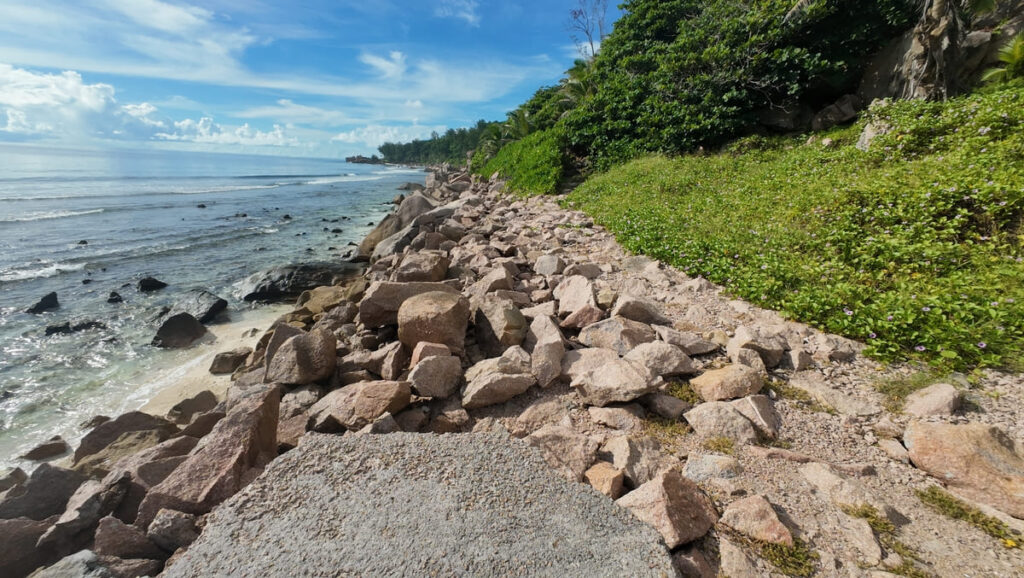
Anse Caiman
If you follow the trail on foot from Anse Fourmis, you’ll pass through Anse Caiman and arrive at Caiman Beach Bar about 25 minutes later.
Just a heads-up: the ocean at Anse Caiman Beach isn’t safe for swimming, so it’s best to admire the view and snap some photos instead.
There’s also a Rock Bassin nearby, but it actually takes you off the trail to Anse Cocos, so we’d recommend just checking out the natural pool at Anse Cocos, rather than this one.
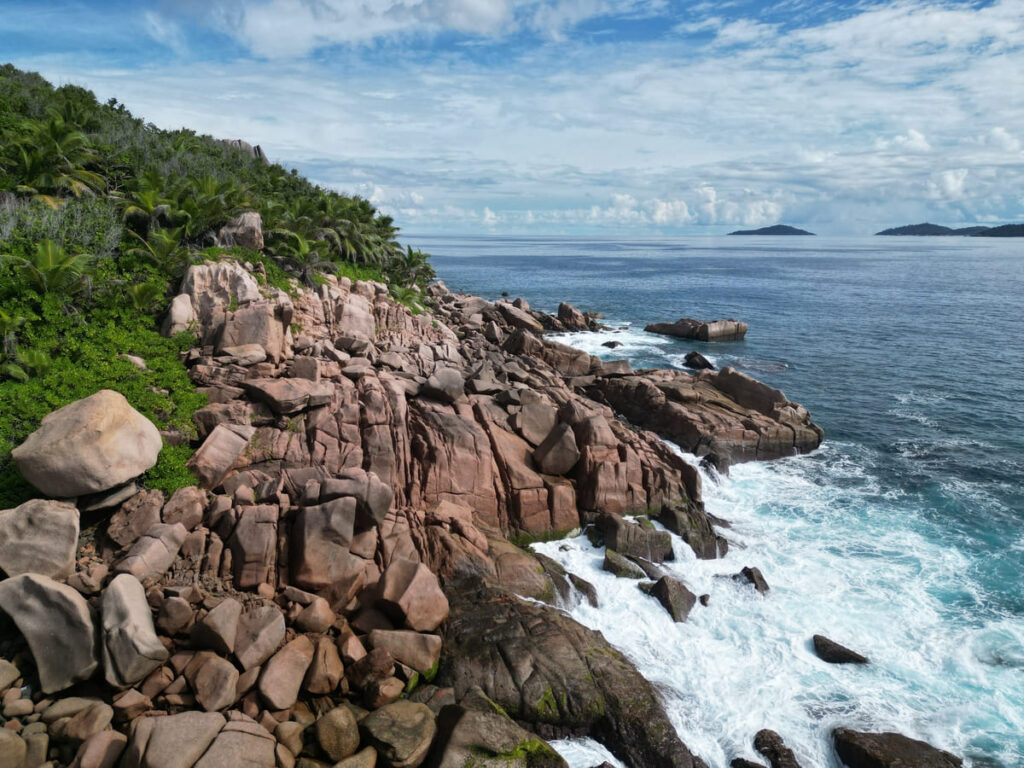
When you keep going past the beach bar to your right, you’ll be heading towards the trail that will get you to the next beach, Anse Cocos – the beach of all beaches.
Anse Cocos Trail
For those up for the adventure, the hike to Anse Cocos is an experience that stands out on La Digue. It may feel like you’re getting lost, but keep an eye out for the yellow arrows that will lead the way.

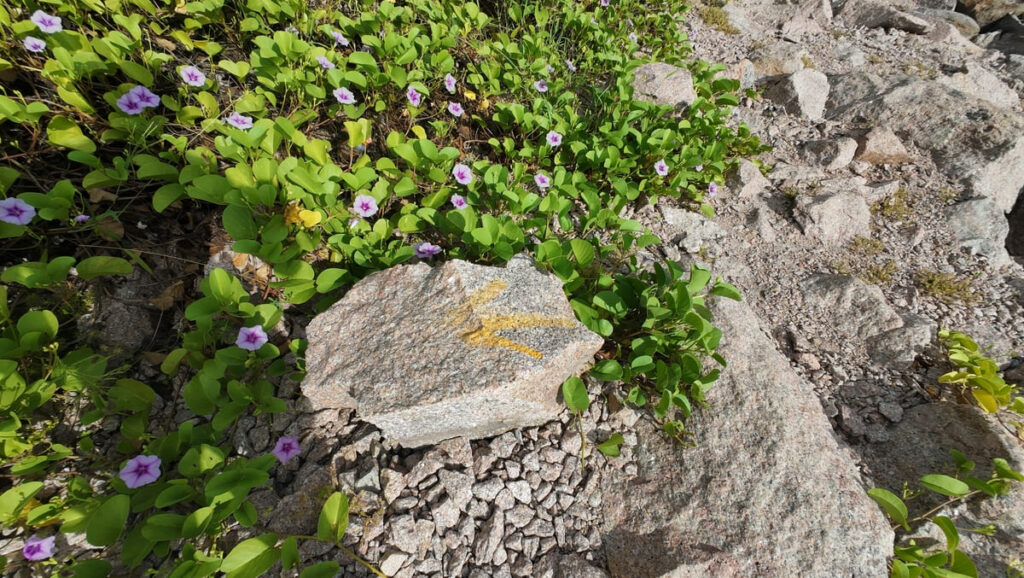
This secluded beach isn’t just another gorgeous spot—it’s my husband’s absolute favorite for a reason.
The journey there is a bit of a challenge, including climbing ladders and crossing log bridges, but once you arrive, the remoteness and the wild beauty make it feel like you’ve discovered a hidden paradise all to yourself.
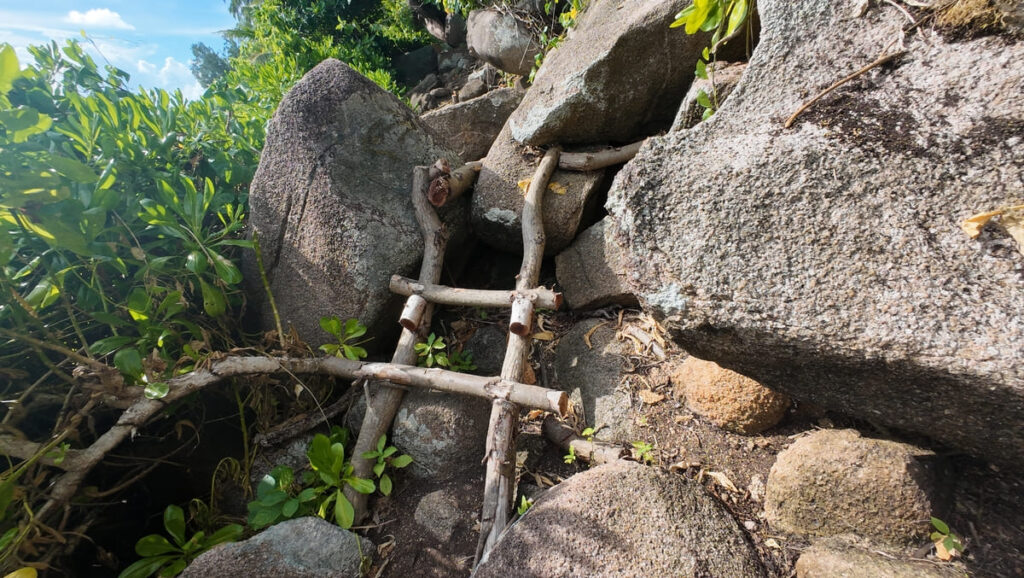

The crystal-clear waters and the natural rock pool, tucked between the granite boulders, are a gorgeous sight to see.
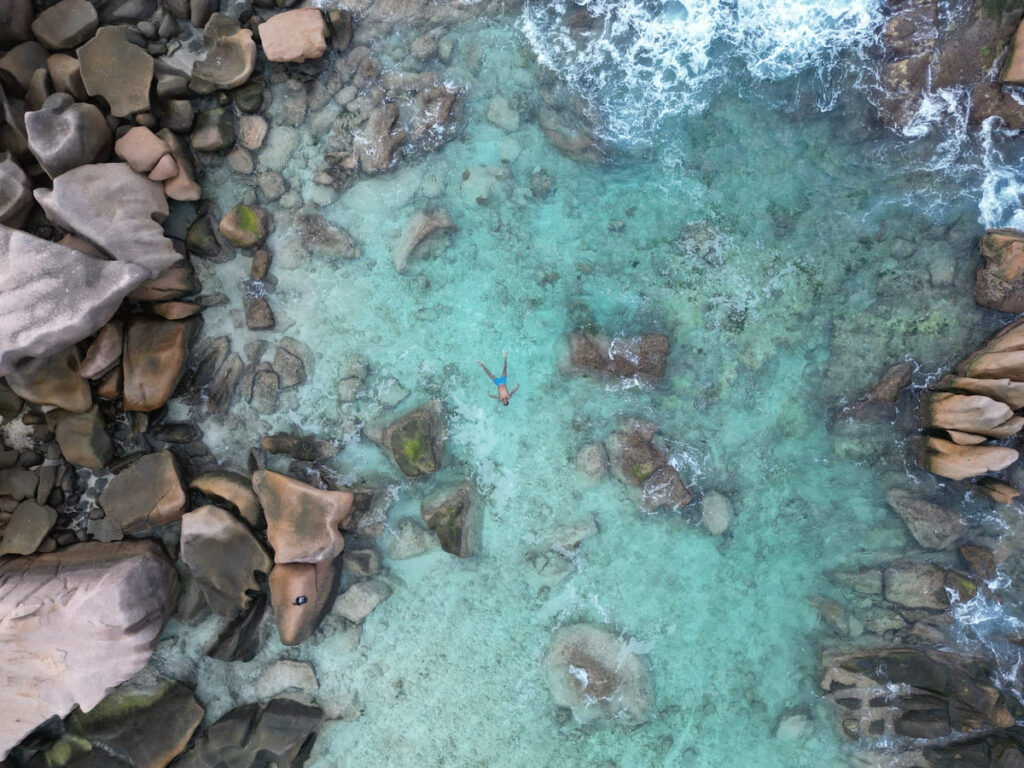
It’s not recommended to swim in Anse Cocos Beach, but you can get into the rock pool which is protected by granite boulders from any rough waters.
Now, there are two ways to reach Anse Cocos, and you can pick the one that suits you best:
- Option 1 (The Path My Husband Took): If you’re down for a challenge, keep hiking past Anse Fourmis and Anse Caiman. It’s a bit of a hike through the jungle with some steep climbs, but you’ll be rewarded with complete seclusion. My husband made it, and he says the effort makes the beach feel even more special when you finally get there.
- Option 2: Or, start from Grand Anse Beach. The path starts near Loutier Coco Restaurant and takes about 45 minutes through the jungle (there’s some uphill action here too). You’ll pass Petite Anse Beach along the way, and eventually end up at Anse Cocos. You’ll know you’re headed in the right direction when you see signs for Coco Bar.
Whichever path you take, you’ll have a nearly empty beach all to yourself—no crowds, just peace and quiet. Perfect for chilling out and taking in the beauty of La Digue at your own pace.
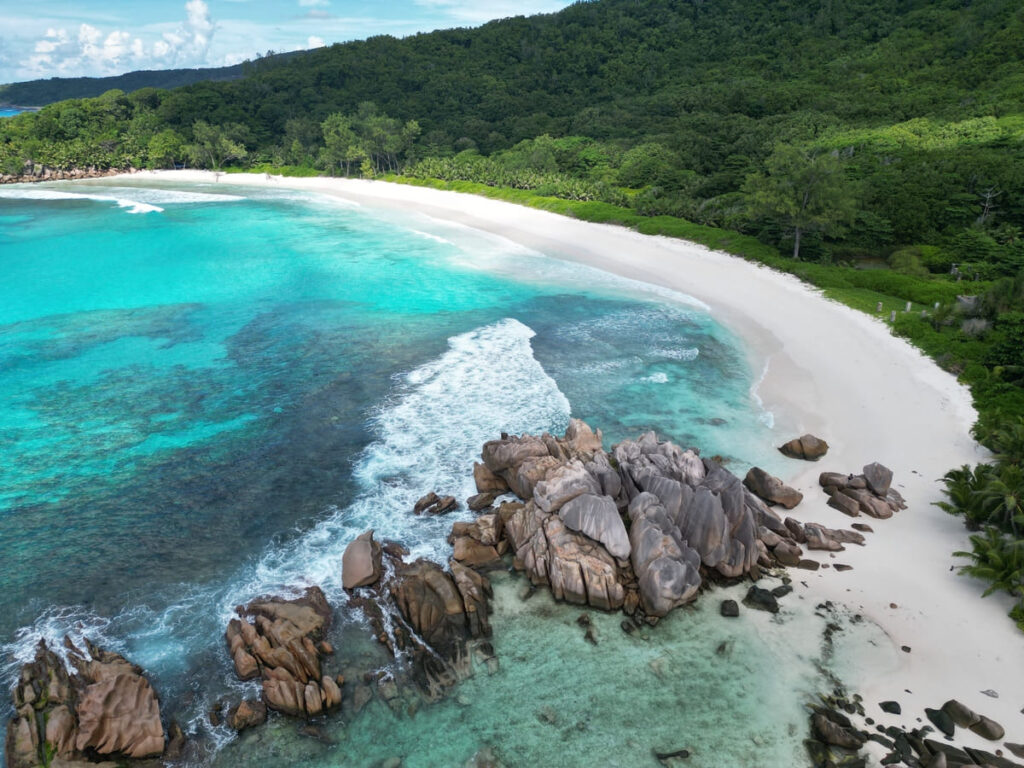
RELATED ARTICLE: 1 week in Egypt
Lunch
After your morning of exploring, grab lunch at Rey & Josh’s, a local takeaway restaurant known for its delicious Creole cuisine.
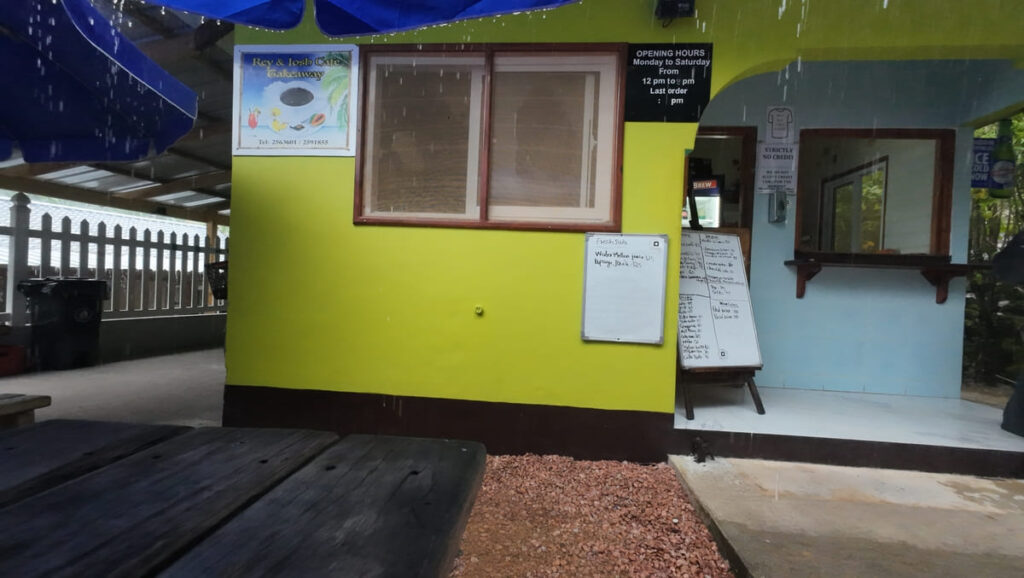
We ordered veggie curry, lamb curry, chicken samosas, and chips.
The meal was reasonably priced at about 200 rupees (~$14 USD), and they pack everything in to-go containers.
You can eat at their picnic tables, which have umbrellas that shield you from the hot sun, or if you come during the rainy season like we did in March, then it also protects you from any downpours.

Sunset
If you spent the day beach-hopping, you can end up at any of La Digue’s stunning beaches for sunset.
Remember, if you entered Anse Source D’Argent after 4:30 pm yesterday, your entry ticket is still valid for today as long as you get there before 4:30 pm!
Head back there to enjoy a beautiful, quieter sunset, as it’s less crowded near the end of the day.
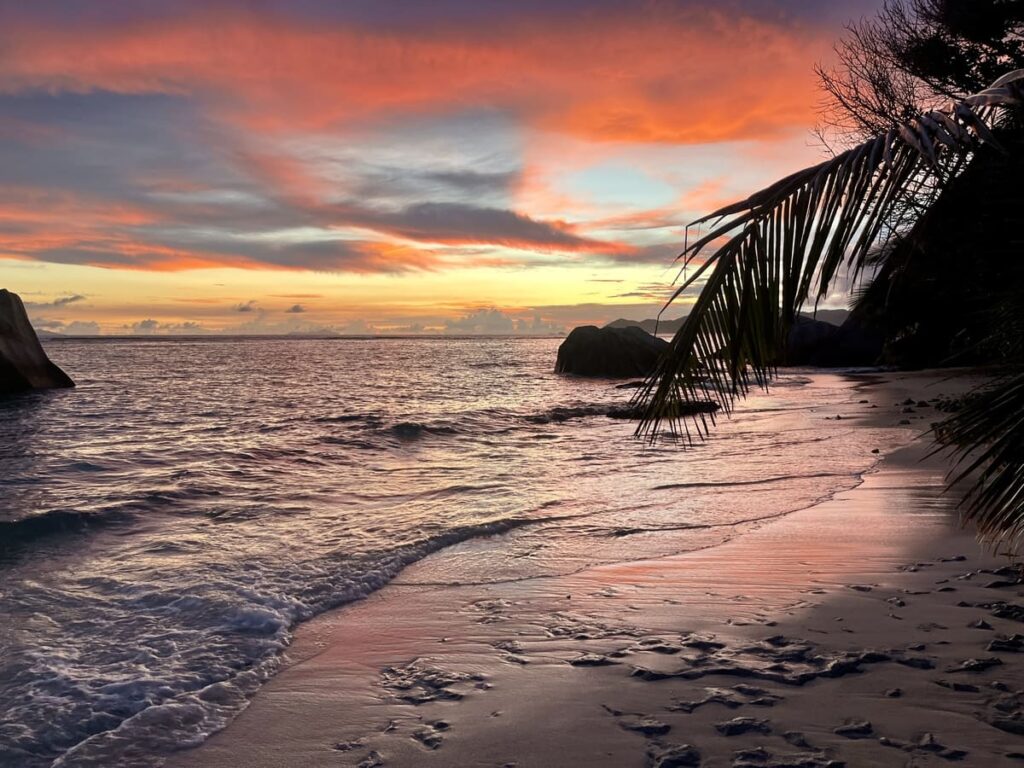
Dinner
For dinner, check out KZ Takeaway. I ordered the veggie spring rolls and veggie wrap, all for just 165 rupees (~$12 USD).
RELATED ARTICLE: Top 10 Things to See in Mahe, Seychelles
Day 3
It’s your last day in La Digue, and while today is mostly a travel day, you can still squeeze in a little more beach time.
Whether it’s revisiting a favorite spot from Day 2 or catching a beach you missed, waking up early gives you time to enjoy one last dip in the stunning waters of La Digue.
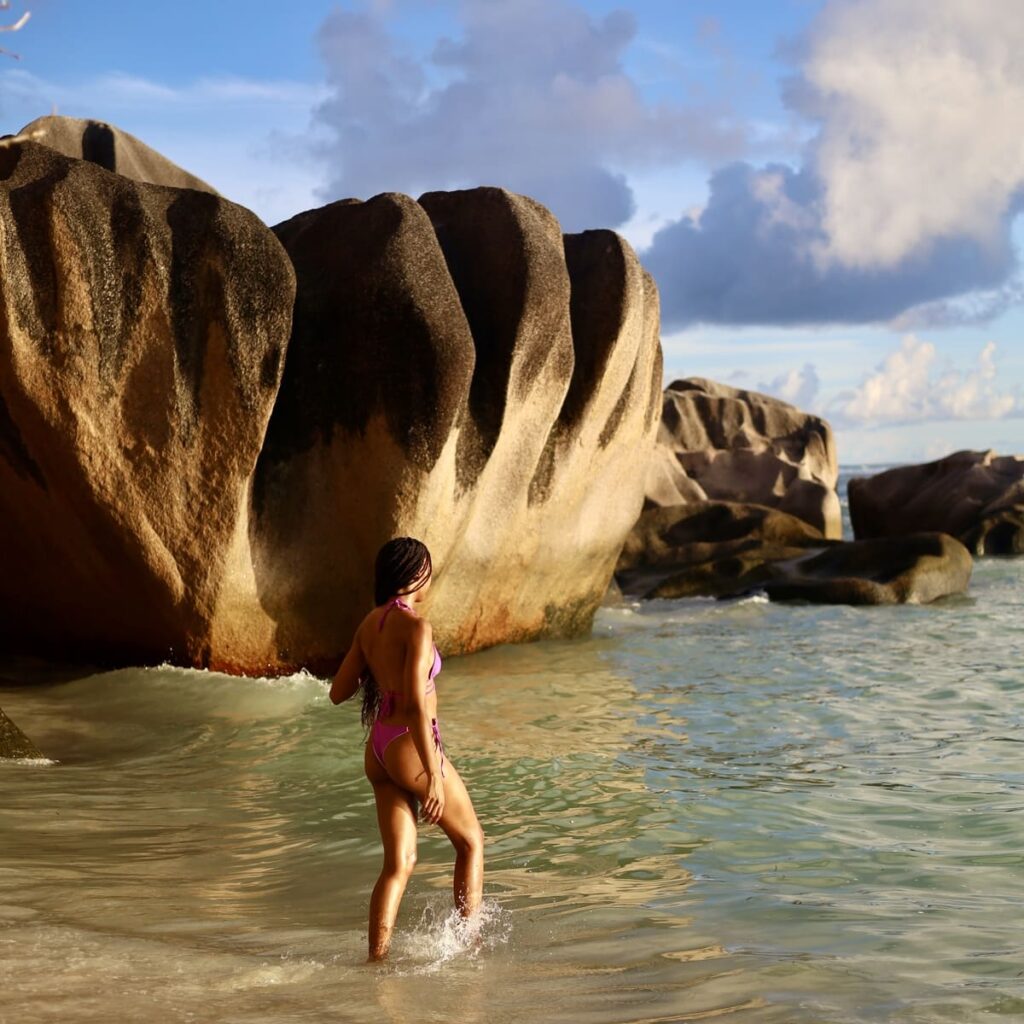
Afterward, head to the ferry, where you can continue your adventure to either Praslin or Mahe and explore more of what the Seychelles islands have to offer.
RELATED ARTICLE: Top Travel Tips to Plan Your Holiday to the Seychelles
La Digue Tips
- Stay hydrated—bring plenty of water because it gets hot!
- Carry cash since some of the beach bars don’t accept cards.
- Don’t forget the sunscreen to protect your skin from getting burned.
- Be mindful of the tides—avoid swimming during high tide as it can be dangerous.
- Take a picture of your bike to remember which one is yours when you park, since everyone gets around by bike.
- Slow it down. This is a very laid back island and you should take the time to really take it all in and enjoy the beauty. This might mean adding another day or two to your itinerary.
FAQs
How many days should I spend in La Digue?
2-4 days is ideal to explore the island and relax on its beaches.
Is it worth staying on La Digue?
Absolutely! The island’s laid-back vibe and stunning beaches make it worth staying.
Should I stay in Praslin or La Digue?
Both are great, but La Digue is more relaxed and intimate, while Praslin is larger with more resorts.
Is La Digue expensive?
It can be, but with careful planning, you can manage on a budget.
What is the most photographed beach in La Digue?
Anse Source D’Argent—its unique rock formations are iconic.

Explore Seychelles Travel Guide
If you’re looking to make the most out of your time in Seychelles, our Explore Seychelles Travel Guide has you covered.
It’s packed with top recommendations for not just La Digue, but also Mahe, Praslin, and even Platte Island.
This guide will help you plan your trip with ease, so you don’t miss any of the best beaches, attractions, or experiences across the islands.

Whether you’re into adventure, relaxation, or a bit of both, this digital travel guide is your perfect travel companion for discovering all that Seychelles has to offer, including how to save money. Download it today!



